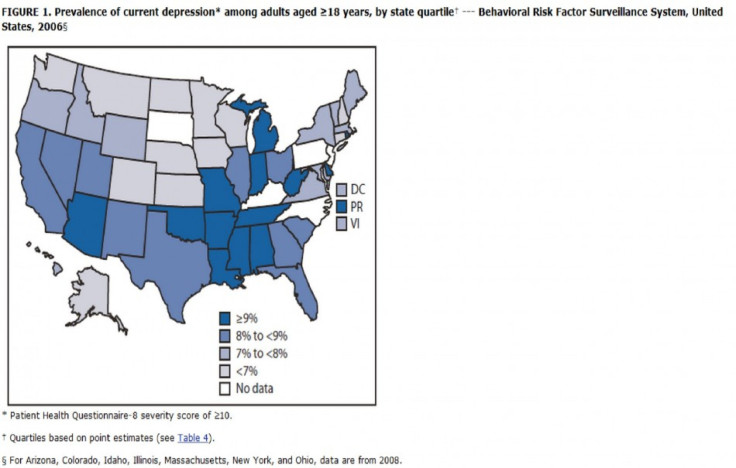Half of Americans Will Suffer From Mental Illness, Southeast the Worst Off [MAPS]

Nearly half of Americans will develop at least one mental illness during their lifetime. Currently, approximately a quarter of Americans suffer from mental illness, stated a recently published report from the Centers for Disease Control and Prevention (CDC).
The World Health Organization (WHO) estimates that mental illnesses account for more disability in develop countries than any other types of illnesses, including cancer and heart diseases.
The most common mental illnesses in adults are anxiety and mood disorders. The impact ranges from minor disruptions in life to incapacitating critical life functions and causing premature death.
Moreover, mental illness exacerbates morbidity in serious (and associated) conditions like diabetes, obesity, heart disease, and epilepsy.
The cost of mental illnesses is enormous; in 2002 and 2003, it was estimated to be $300 billion annually in the U.S.
In the U.S., mental illnesses are the most severe in the southeast region. For example, the prevalence of current depression is the highest in Mississippi and West Virginia at 13.7 percent and the prevalence of serious psychological distress is the highest in Tennessee at 9.4 percent.
CDC theorizes that the regional differences reflect sociodemographics, access to and use of health care, and the association between mental illness and certain chronic diseases such as obesity, diabetes, and cardiovascular disease.
The most obese states, not surprisingly, are also in the southeast region.
Increased awareness of the value of mental illness surveillance is important...Therefore, increased emphasis should be placed on using this information to initiate public health action and on using surveillance to measure outcomes, stated the CDC.
© Copyright IBTimes 2024. All rights reserved.





















